Button batteries warning after Taronga Zoo Vivid display
FLASHING wristbands handed out to children at Taronga Zoo during Vivid festival have been recalled because the “button” batteries inside could kill if swallowed.
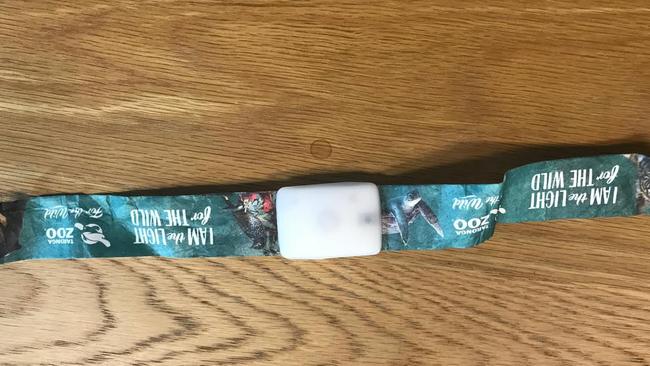
Mosman
Don't miss out on the headlines from Mosman. Followed categories will be added to My News.
PARENTS have been urged to immediately dispose of wristbands which were given out at Taronga Zoo during the Vivid festival.
NSW Fair Trading issued the warning, saying the “button” batteries in the bands could cause “serious health issues” if swallowed.
Choice magazine warned at the start of this month that two children had been killed in Australia by button battery-related injuries and Product Safety Australia estimates 20 children a week are treated at emergency departments nationwide because they have swallowed or inserted button batteries.
After a complaint on Wednesday last week and a visit from Fair Trading, a spokesman for the zoo said it had voluntarily chosen to suspend the issue of the wristbands.
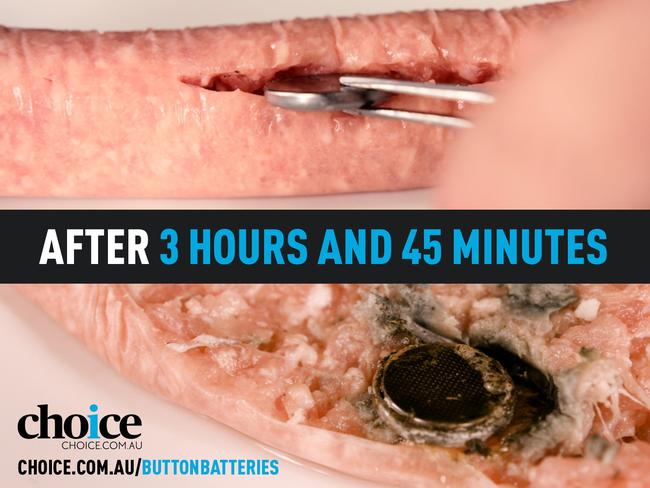
The Taronga spokesman said the bands were a way of letting guests become a part of the Vivid experience, which concluded over the weekend, and the zoo was confident they met the required safety standards.
“Each wristband consists of five recyclable or reusable parts and Taronga actively encouraged all guests to recycle their wristbands at the end of the night,” he said.
A Fair Trading spokeswoman said: “A button battery can get stuck in the oesophagus or elsewhere in a child’s system, burning through soft tissue in as little as two hours, and causing serious illness or death.
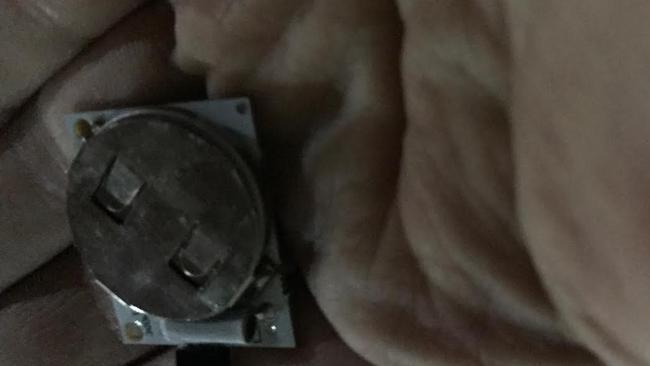
According to Choice, the real danger from the batteries is the electrical charge from the battery when it’s stuck in body tissue. It causes heat which can burn inside the stomach, oesophagus, bowel or even a nostril in less than two hours.
“This charge exists even in batteries that seem flat, so while it may not have enough power to run your device any longer, it can still cause catastrophic damage inside a child,” Choice warns..
COATING FOR BUTTON BATTERIES THAT COULD SAVE LIVES
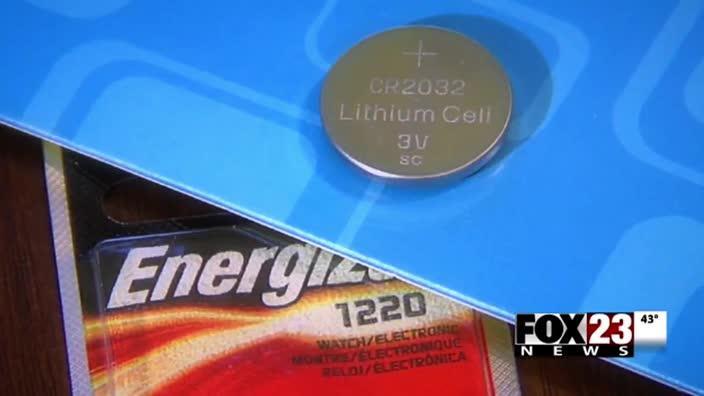
“Every week, around 20 Australian children present to an emergency department following exposure to button batteries.”
She said Fair Trading was working with zoo management on the next steps.
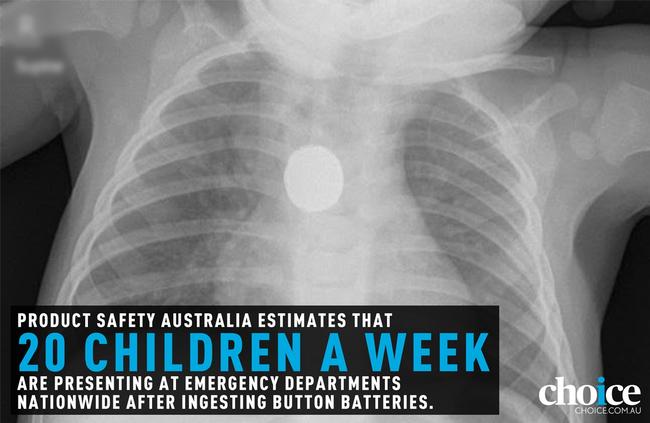
THE PROBLEMS WITH BUTTON BATTERIES
According to Choice the following are what make button or disc batteries a safety problem compared to other batteries:
■ Size: They are the perfect size to lodge in a windpipe. If it were much smaller, it would travel to the stomach and eventually be passed in the stool.
■ Design: the anode (where the current flows in from outside) and cathode (where the current flows out) are close, and result in a high current which passes quickly through salty tissue. It is this electrical current (not the leaking battery acid) that creates heat that can cause serious burns within two hours of swallowing.
■ Dangerous even when flat: a lithium battery will still cause damage when it’s out of charge. The battery will stop working at about 1.1 volts, but can still cause burns even when it’s below one volt.
■ They go down easily and they don’t hurt: many children can swallow a disc battery without choking or coughing, which means unless someone sees them do it, parents or carers will be none the wiser. Kidsafe’s Teerds says the smooth, shiny look and feel is also particularly appealing to younger children who like to put things in their mouths. Soft tissue in the oesophagus and gut doesn’t register pain very well, so the battery can burn severely without the child noticing.
■ The symptoms are varied: if a child has swallowed a battery, they’re unlikely to tell anyone. Young children don’t remember, and older children are often reluctant to say anything for fear of getting in trouble.
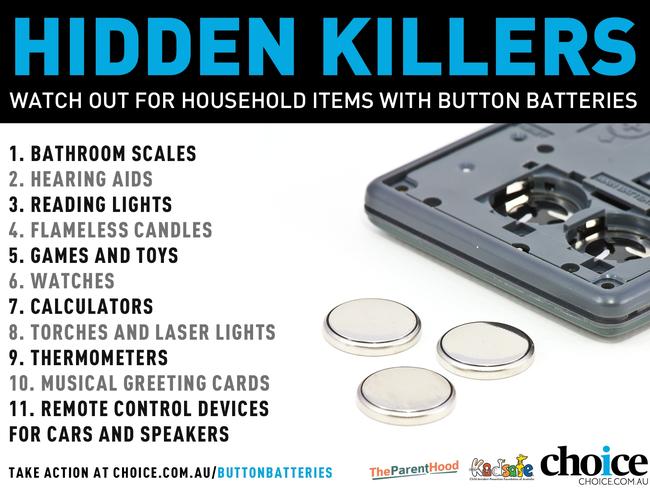
SAFETY TIPS
■ If you suspect a child has swallowed a button battery, immediately call the Poisons Information Centre on 13 11 26 or go to a hospital emergency room. Do not let the child eat or drink, and do not induce vomiting.
■ Keep all disc battery operated devices out of sight and out of reach of children.
■ Examine devices and make sure the battery compartment is secure.
■ Dispose of used button batteries immediately. Flat batteries can still be dangerous.
■ Tell others about the risk associated with button batteries, and how to keep their children safe.
WHAT CHOICE IS CALLING FOR
■ All button battery powered products to have a secure battery compartment.
■ Button batteries of up to 32mm diameter to be sold in child-proof packaging.
■ Products supplied with a button battery to ensure the battery is secured within the battery compartment and not loose in the product packaging.
■ Products that use or contain button batteries to have clear and concise warnings, making the risk clear to consumers at point of purchase.


